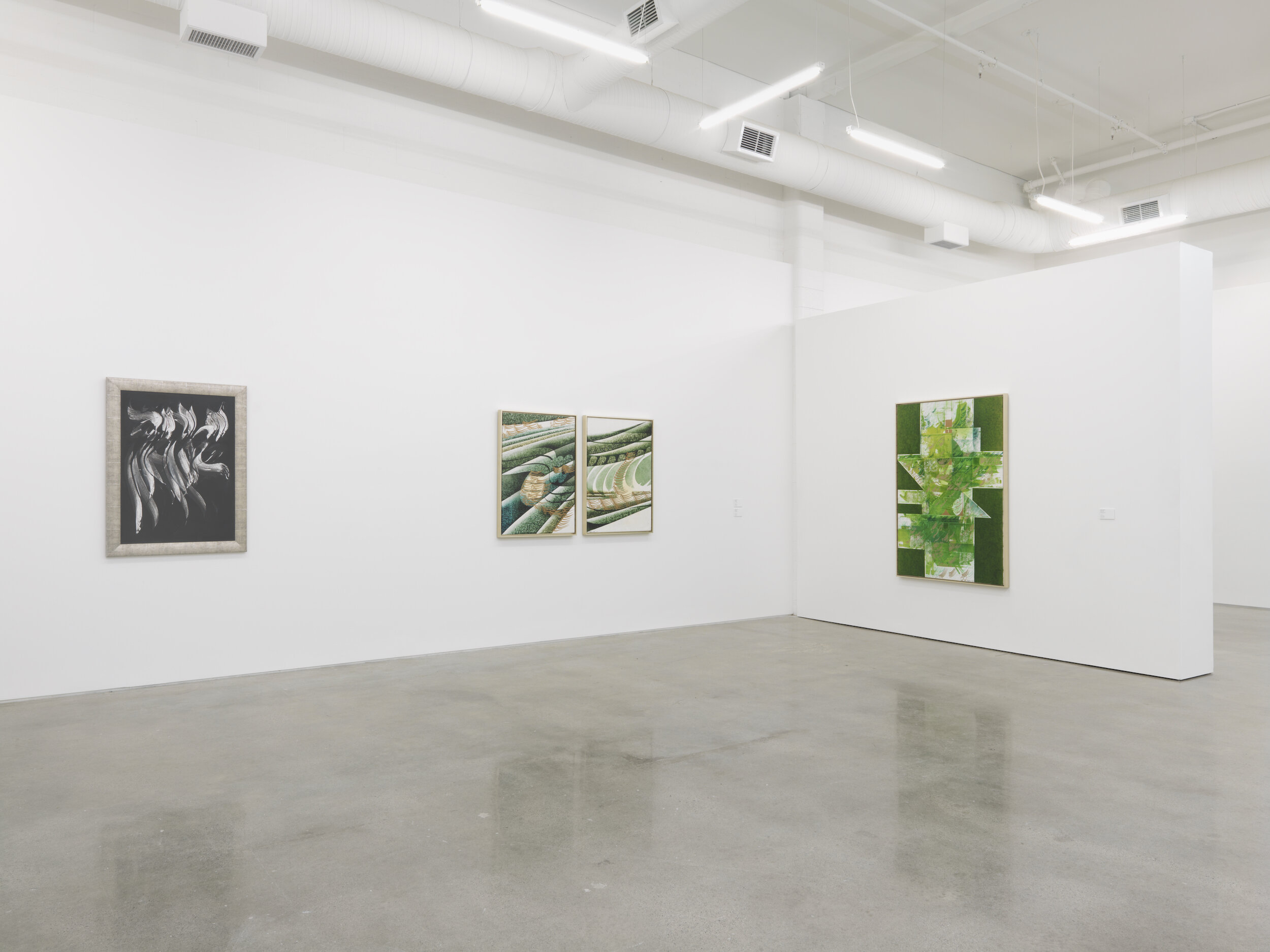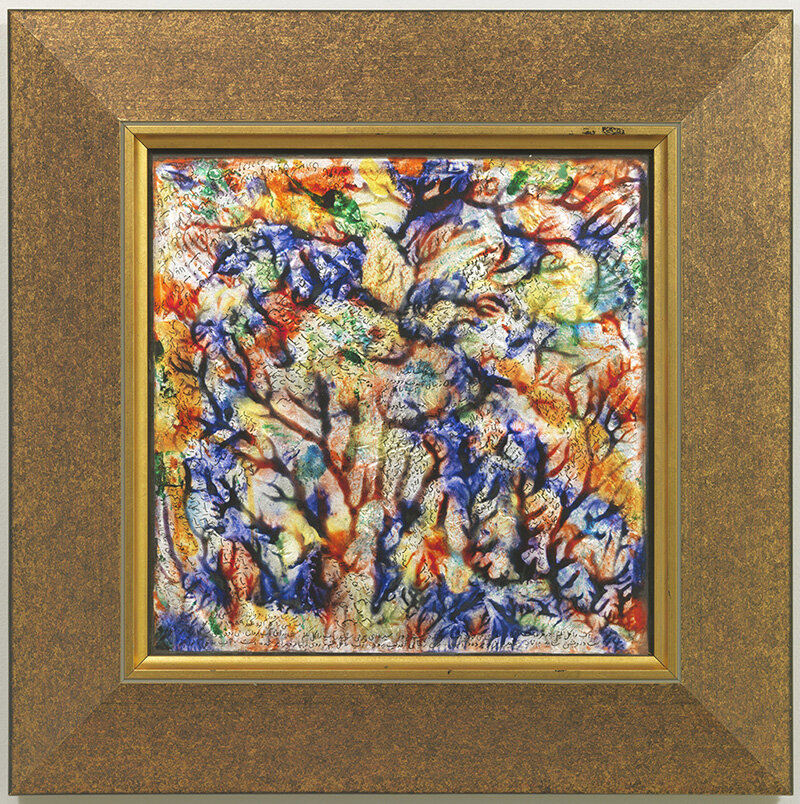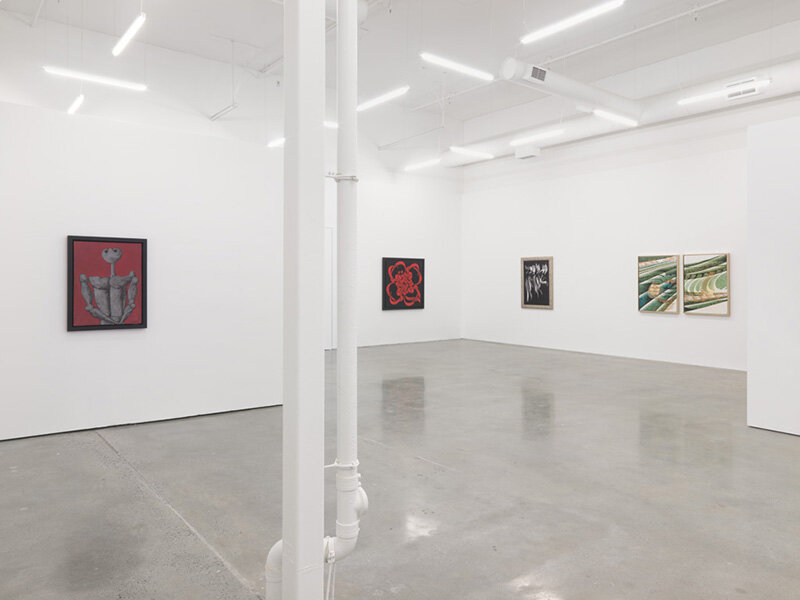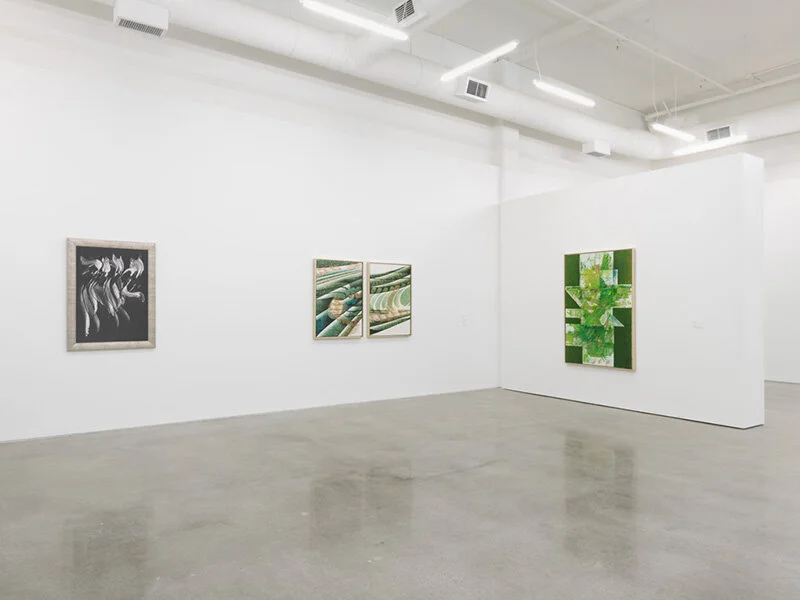
Modernism in Iran
January 26 - May 5, 2018
Curated by Pantea Haghighi
Griffin Art Projects is honoured to present Modernism in Iran: 1958 – 1978, curated by Pantea Haghighi and drawn from private collections across the continent. With significant works from influential artists of this period, this exhibition brings a contemporary lens to an important period of experimentation and innovation.
Modernism in Iran: 1958 – 1978 features works by Mohammad Ehsai, Monir Shahroudy Farmanfarmaian, Mansour Ghandriz, Farideh Lashai, Sirak Melkonian, Bahman Mohasses, Faramarz Pilaram, Behjat Sadr, Parviz Tanavoli, Mohsen Vaziri-Moghaddam, and Charles Hossein Zenderoudi, who played pivotal roles in defining and establishing Iranian aesthetics during the cultural renaissance of the latter twentieth century. Their work exemplifies this important period in Iran’s history, signaling the beginning of a widespread adoption of diverse approaches to defining contemporary Iranian identity.
Iranian cultural practices underwent a transformation during this period, which resulted in a bifurcation of art production expressing a national artistic identity on the one hand, and one heavily influenced by “Westernization” on the other. Artists reconceived of folk culture and Persian traditional motifs amidst increasing global consciousness and technological development, forging a link between heritage and progress. This is exemplified by a neo-traditional movement pioneered by such artists as Mansour Ghandriz, Parviz Tanavoli, Mohammad Ehsai, Monir Shahroudy Farmanfarmaian, Faramarz Pilaram and Charles Hossein Zenderoudi. Meanwhile, artists including Bahman Mohasses, Farideh Lashai, Sirak Melkonian, Behjat Sadr, and Mohsen Vaziri-Moghaddam incorporated Western influences, drawing links to their contemporaries in Europe and North America.

Monir Shahroudy Farmanfarmaian, Don’t muddy the water, 1979, Glass, paint, ink, 30.5 cm x 30.5 cm, Collection of Houman M. Sarshar, Photo by Rachel Topham Photography

Installation view, from left to right: Mansour Ghandriz, Untitled, 1960, Oil on canvas, 98.5 cm x 63.5 cm, Collection of Houman M. Sarshar; Parviz Tanavoli, Here no one opens any gates, 1970, Bronze, 59 cm x 58.5 cm x 8 cm, Collection of the Artist; Photo by Rachel Topham Photography

Mansour Ghandriz, Untitled, 1960, Oil on canvas, 98.5 cm x 63.5 cm, Collection of Houman M. Sarshar, Photo by Rachel Topham Photography

Installation view, from left to right: Bahman Mohasses, Untitled, 1966, Oil on canvas, 4 cm x 63 cm, Collection of Houman M. Sarshar; Mohammad Ehsaei, Eshgh, 1988 – present, Oil on canvas, 108 cm x 108 cm, Collection of the Artist; Mohammad Ehsaei, Eternal Alphabeth Series (Allah), 1968 – 2009, Oil on board, 14 cm x 84 cm, Private Collection; Faramarz Pilaram, Untitled, 1975, Oil on canvas, 70 cm x 99 cm, Private Collection; Faramarz Pilaram, Untitled, 1975, Oil on canvas, 70 cm x 99 cm, Private Collection; Photo by Rachel Topham Photography

Installation view, from left to right: Behjat Sadr, Siyah o Sefid, 1961, Acrylic on linen, 156 cm x 32.5 cm, Collection of Houman M. Sarshar; Mohsen Vaziri-Moghadam, Ritmo Continuo (Hakat-e modām), 1963, Mixed media, 82 cm x 35.5 cm, Collection of Houman M. Sarshar; Mohsen Vaziri-Moghadam, Untitled, 1968, Mixed media, 110 cm x 170 cm, Collection of Houman M. Sarshar; Bahman Mohasses, Untitled, 1967, Oil on board, 70 cm x 46 cm, Collection of Houman M. Sarshar; Photo by Rachel Topham Photography

Mohsen Vaziri-Moghadam, Untitled, 1968, Mixed media, 110 cm x 170 cm, Collection of Houman M. Sarshar, Photo by Rachel Topham Photography

Mohsen Vaziri-Moghadam, Ritmo Continuo (Hakat-e modām), 1963, Mixed media, 82 cm x 35.5 cm, Collection of Houman M. Sarshar, Photo by Rachel Topham Photography

Installation view, from left to right: Mohammad Ehsaei, Eternal Alphabeth Series (Allah), 1968 – 2009, Oil on board, 14 cm x 84 cm, Private Collection; Faramarz Pilaram, Untitled, 1975, Oil on canvas, 70 cm x 99 cm, Private Collection; Faramarz Pilaram, Untitled, 1975, Oil on canvas, 70 cm x 99 cm, Private Collection; Faramarz Pilaram, Untitled, 1970, Oil on canvas, 153.5 cm x 41.5 cm, Private Collection; Photo by Rachel Topham Photography

Installation view, from left to right: Farideh Lashai, Ceramic Vase, 1960, Ceramic, 25.5 cm x 7 cm, Collection of Houman M. Sarshar; Farideh Lashai, Ceramic Vase, 1960, Ceramic, 30.5 cm x 7.5 cm, Collection of Houman M. Sarshar; Farideh Lashai, Ceramic Vase, 1960, Ceramic, 30.5 cm x 8.5 cm, Collection of Houman M. Sarshar; Sirak Melkonian, Untitled, 1978, Oil on canvas, 60 cm x 70 cm, Collection of the Artist; Sirak Melkonian, Untitled, 1977, Oil on canvas, 99 cm x 69 cm, Collection of the Artist; Photo by Rachel Topham Photography
